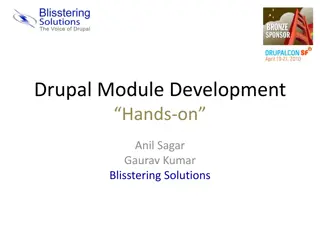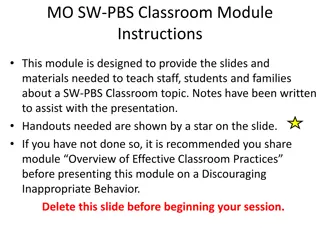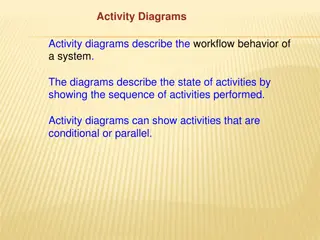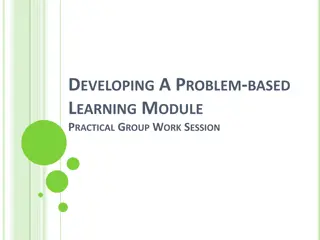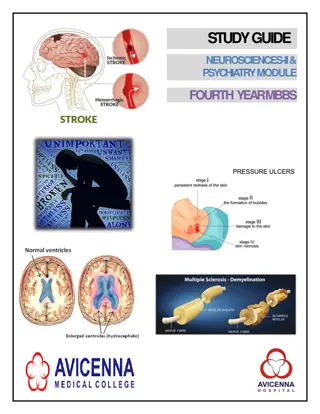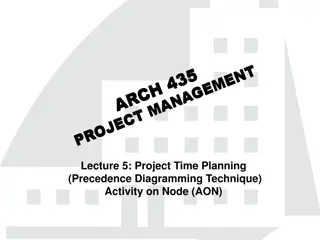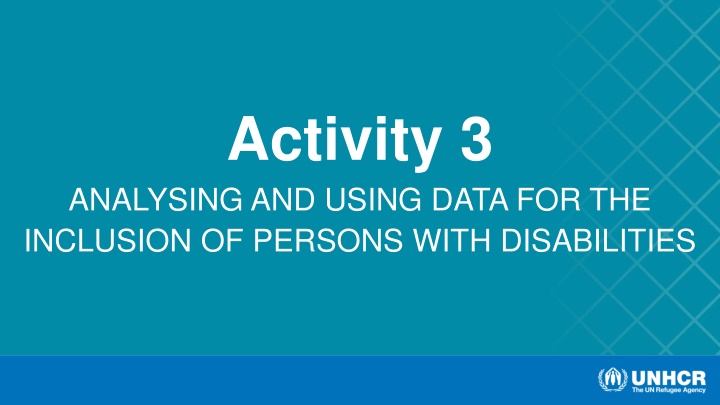
Enhancing Data Accessibility for Inclusion of Persons with Disabilities
Explore strategies to enhance data accessibility for the inclusion of persons with disabilities, covering ground rules, communication, physical accessibility, and targeted support adjustments. Learn about easy-to-read information, communication boards, and bridging the gap between accessibility and individual adjustments.
Download Presentation

Please find below an Image/Link to download the presentation.
The content on the website is provided AS IS for your information and personal use only. It may not be sold, licensed, or shared on other websites without obtaining consent from the author. If you encounter any issues during the download, it is possible that the publisher has removed the file from their server.
You are allowed to download the files provided on this website for personal or commercial use, subject to the condition that they are used lawfully. All files are the property of their respective owners.
The content on the website is provided AS IS for your information and personal use only. It may not be sold, licensed, or shared on other websites without obtaining consent from the author.
E N D
Presentation Transcript
Activity 3 ANALYSING AND USING DATA FOR THE INCLUSION OF PERSONS WITH DISABILITIES
Ground rules and accessibility Say your name when speaking Allow time for interpretation Use captions if available Describe images
What we will cover today How to enhance the accessibility of data collection processes? How to provide additional support to allow equal access to data collection processes? Which actions can be put in place for disability inclusion?
APPLYING STRATEGIES FOR THE INCLUSION OF PERSONS WITH DISABILITIES USING DATA COLLECTED Part 3
Accessibility of information Accessibility of communication Universal design
Accessibility of information Easy-to-read information is clear and easy to understand. It is written using everyday words and it is supported with pictures. This is an example of easy-to-read!
Accessibility of communication Figure 6: Communication board Source: UNICEF
Physical accessibility
Targeted support/ adjustments Outreach services / transportation allowances, etc. Evaluate options and resources Offer a solution Verify with the person Ask the person Inaccessible situation
Bridging the gap between accessibility and individual adjustments Accessibility Reasonable accommodation Has to be provided immediately, otherwise there is discrimination Can be implemented over time Is a general solution Is an individual solution Applies regardless of the need of persons with disabilities to access infrastructure, services or information Applies from the moment that a person requires access to a non-accessible situation Is guided by general principles of universal design Is tailored to the person and designed together with the person concerned Is ruled by accessibility standards (issued in country, or applicable from other countries) Is ruled by a proportionality test: is it relevant, available or affordable by the project?
Test: Which strategy is being used? Accessibility of information Accessibility of communication Targeted support/ adjustments
Strategies in action Individual data Read a case study of a person with a disability Discuss accessibility and support requirements Select and apply actions for disability inclusion What would be the expected impact on the protection of this individual?
Plenary How could we make information accessible? What types of strategies would be more applicable? Which would be the expected impact on the protection of this case?
Monitoring disability inclusion Discapacidad y Movilidad Humana The power of inclusion- Mapping the Protection Responses for Persons with Disabilities Among Refugees in MENA UNHCR Global Report 2020 - UNHCR Flagship Reports Monitor access Inform indicators Disability marker in COMPASS Published reports
Key messages Interventions should focus on mitigating barriers. Persons with disabilities have a variety of needs. There are actions that can be put in place even without data.
Resources IASC Guidelines, Inclusion of Persons with Disabilities in Humanitarian Action, 2019 | IASC Refworld | Need to Know Guidance: Working with Persons with Disabilities in Forced Displacement (EN-AR-FR-SP) UNHCR - Working with Persons with Disabilities in Forced Displacement Facilitator's Guide Guidance on strengthening disability inclusion in Humanitarian Response Plans - World | ReliefWeb The Washington Group on Disability Statistics - Home UNHCR Guidance Identification of persons with disabilities at Registration and other data collection efforts Disability Statistics in Humanitarian Action | Humanity & Inclusion (e-learning) Resettlement Assessment Tool Refugees with Disabilities Supporting participation of persons with disabilities across all cycles of participatory assessments











